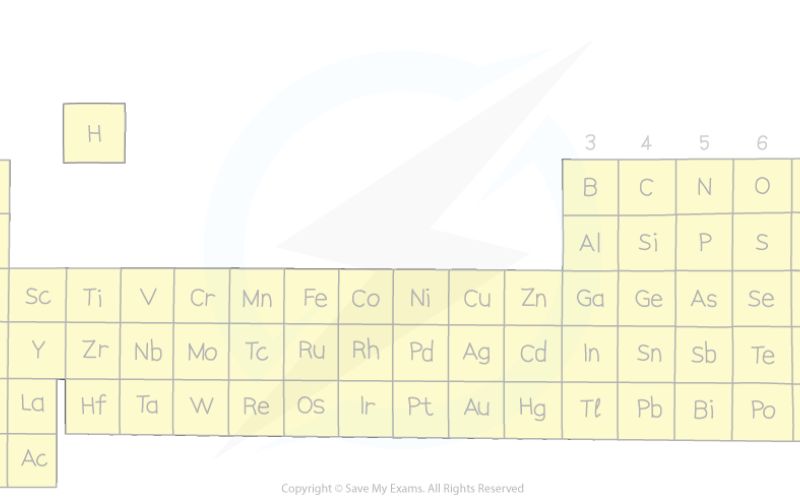The periodic table of elements stands as one of the most iconic and fundamental tools in the field of chemistry. This tabular arrangement organizes the chemical elements based on their atomic number, electron configurations, and recurring chemical properties. Its creation and evolution have been instrumental in advancing our understanding of chemical behavior, atomic theory, and the nature of matter. This article delves into the history, structure, and significance of the periodic table, exploring its profound impact on science and technology.
Historical Background
The journey towards the development of the periodic table began in the early 19th century when scientists started to recognize patterns in the properties of elements. One of the first significant contributions came from Johann Wolfgang Döbereiner, who, in 1817, identified groups of three elements (triads) with similar properties. This observation hinted at an underlying order among the elements.
In 1864, John Newlands proposed the Law of Octaves, suggesting that elements, when arranged by increasing atomic weight, exhibited similar properties at intervals of eight. While his idea was met with skepticism, it laid the groundwork for future developments.
The breakthrough came in 1869 when Russian chemist Dmitri Mendeleev published his periodic table. Mendeleev arranged elements by increasing atomic weight and grouped them based on similar chemical properties. His table left gaps for undiscovered elements, predicting their properties with remarkable accuracy. Mendeleev’s periodic table gained widespread acceptance and formed the basis for the modern periodic table we use today.
Structure of the Periodic Table
The periodic table is a grid-like arrangement with elements placed in rows (periods) and columns (groups or families). Each element is represented by its chemical symbol, atomic number, and atomic weight. The structure of the periodic table reveals a wealth of information about the elements and their relationships.
Periods
The horizontal rows of the periodic table are called periods. There are seven periods in the modern periodic table, each corresponding to the highest energy level of electrons in an element’s atoms. As you move from left to right across a period, the atomic number increases, indicating the addition of protons and electrons. Elements in the same period do not necessarily exhibit similar chemical properties, but they do show a gradual change in properties as you move across the row.
Groups
The vertical columns of the periodic table are known as groups or families. Elements within a group share similar chemical properties because they have the same number of valence electrons, which are responsible for chemical bonding. The periodic table has 18 groups, each with its unique characteristics.
- Group 1: Alkali Metals – Highly reactive metals, including lithium, sodium, and potassium.
- Group 2: Alkaline Earth Metals – Reactive metals like magnesium and calcium.
- Groups 3-12: Transition Metals – Elements such as iron, copper, and gold, are known for their ability to form complex compounds.
- Group 17: Halogens – Reactive nonmetals like fluorine, chlorine, and bromine.
- Group 18: Noble Gases – Inert gases including helium, neon, and argon.
Blocks
The periodic table is divided into four main blocks based on the electron configurations of the elements: s-block, p-block, d-block, and f-block.
- s-block: Groups 1 and 2, along with hydrogen and helium, make up the s-block. Elements in this block have their outermost electrons in the s orbital.
- p-block: Groups 13 to 18 belong to the p-block, where elements have their outermost electrons in the p orbital.
- d-block: Transition metals, occupying groups 3 to 12, are part of the d-block. Their outermost electrons are in the d orbital.
- f-block: The lanthanides and actinides form the f-block, where elements have their outermost electrons in the f orbital.
Significance of the Periodic Table
The periodic table is not just a tool for organizing elements; it is a powerful predictive framework that has revolutionized the field of chemistry. Its significance can be appreciated in several key areas:
Predicting Element Properties
One of the most remarkable features of the periodic table is its ability to predict the properties of elements based on their position. Mendeleev’s foresight in leaving gaps for undiscovered elements and accurately predicting their properties is a testament to this predictive power. For instance, the discovery of elements like gallium and germanium validated Mendeleev’s predictions, solidifying the credibility of the periodic table.
Understanding Chemical Reactions
The periodic table provides insights into the reactivity and bonding behavior of elements. Elements in the same group tend to exhibit similar chemical reactions due to their identical valence electron configurations. For example, the alkali metals in Group 1 are all highly reactive with water, forming hydroxides and releasing hydrogen gas. This understanding is crucial for predicting the outcomes of chemical reactions and designing new compounds.
Guiding the Discovery of New Elements
The periodic table continues to guide the discovery of new elements. As scientists probe the limits of the table, they explore the synthesis of superheavy elements, pushing the boundaries of known chemistry. Elements beyond uranium (atomic number 92) are typically synthesized in laboratories, and their properties are studied to expand our knowledge of atomic structure and stability.
Facilitating the Study of Periodic Trends
Periodic trends refer to the recurring patterns in the properties of elements across periods and groups. These trends include atomic radius, ionization energy, electron affinity, and electronegativity. Understanding these trends helps chemists predict and explain the behavior of elements in different chemical contexts. For example, electronegativity, which measures an atom’s ability to attract electrons, increases across a period and decreases down a group. This trend is vital for understanding chemical bonding and molecular structure.
Applications in Various Fields
The periodic table has applications beyond traditional chemistry, impacting fields such as physics, biology, and materials science. In physics, the periodic table aids in understanding atomic and nuclear properties. In biology, it helps explain the role of trace elements in biological processes. In materials science, the periodic table guides the development of new materials with tailored properties, such as semiconductors and superconductors.
Evolution of the Periodic Table
Since Mendeleev’s time, the periodic table has undergone significant refinements and expansions. The discovery of noble gases in the late 19th century led to the addition of a new group. The development of quantum mechanics in the early 20th century provided a theoretical foundation for the periodic table, explaining the underlying principles of atomic structure and electron configurations.
The periodic table also evolved with the discovery of new elements. The identification of elements beyond uranium (transuranium elements) required modifications to accommodate these superheavy elements. The most recent additions to the periodic table include elements 113 (Nihonium), 114 (Flerovium), 115 (Moscovium), 116 (Livermorium), 117 (Tennessine), and 118 (Oganesson), completing the seventh period.
Modern periodic tables often include detailed information about each element, such as atomic mass, electron configuration, and common oxidation states. Interactive and digital versions of the periodic table provide dynamic tools for exploring the properties and relationships of elements, making it an invaluable resource for students, educators, and researchers.
Conclusion
The periodic table is more than just a chart of elements; it is a profound representation of the order and beauty inherent in the natural world. Its development has been a journey of discovery and understanding, revealing the underlying principles that govern the behavior of matter. From predicting the properties of elements to guiding the synthesis of new ones, the periodic table remains a cornerstone of chemical science.
As we continue to explore the frontiers of chemistry and beyond, the periodic table will undoubtedly remain an essential tool, guiding our quest for knowledge and innovation. Its legacy is a testament to the ingenuity and curiosity of the scientists who have shaped it, and it will continue to inspire future generations of chemists, physicists, and researchers in their pursuit of understanding the fundamental building blocks of the universe.





